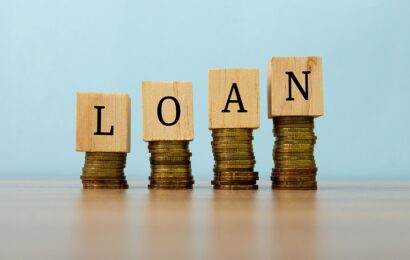Introduction
When it comes to purchasing a home, one of the most critical factors to consider is the interest rate on your home loan. Home loan rates can have a significant impact on your monthly mortgage payments and the total cost of your home over the life of the loan. Understanding how these rates work and how to navigate them is essential for any prospective homebuyer. In this guide, we’ll dive deep into the world of home loan interest rates, helping you make informed decisions on your path to homeownership.

What Are Home Loan Interest Rates?
Home loan interest rates refer to the percentage of your loan amount that you’ll pay to the lender as compensation for borrowing money. This rate is typically expressed as an annual percentage, such as 3.5%, and it can vary widely depending on several factors.
Factors That Influence Home Loan Rates
1. Credit Score
Your credit score plays a crucial role in determining the interest rate you qualify for. Generally, borrowers with higher credit scores are offered lower interest rates. Lenders see borrowers with better credit as less risky, which translates into more favorable rates.
2. Loan Type
The type of home loan you choose also affects the interest rate. Common types include fixed-rate and adjustable-rate mortgages. Fixed-rate mortgages have stable interest rates throughout the loan term, while adjustable-rate mortgages (ARMs) may have lower initial rates that can change over time. Fixed-rate mortgages tend to have slightly higher rates, but they provide predictability.
3. Loan Term
The length of your loan, known as the loan term, can impact the interest rate. Shorter-term loans often come with lower interest rates but higher monthly payments. Longer-term loans may have slightly higher rates but more manageable monthly payments.
4. Economic Conditions
Home loan rates are influenced by broader economic conditions. Factors like inflation, the federal funds rate set by the Federal Reserve, and the overall health of the economy can cause rates to rise or fall. Keeping an eye on these economic indicators can help you time your mortgage application for a favorable rate.
Shopping for Home Loan Rates
Now that you understand the factors that affect home loan rates, let’s explore how you can shop for the best rates.
1. Compare Multiple Lenders
Don’t settle for the first lender you come across. It’s essential to shop around and compare offers from multiple lenders. Each lender may have slightly different rates and fees, so taking the time to gather quotes can save you money in the long run.
2. Improve Your Credit Score
Before applying for a home loan, take steps to improve your credit score if needed. Paying bills on time, reducing outstanding debt, and disputing any inaccuracies on your credit report can all help boost your score and qualify you for better rates.
3. Consider Points
Points, also known as discount points, allow you to buy down your interest rate by paying an upfront fee. While this can increase your initial closing costs, it can lead to lower monthly payments over the life of the loan. Consider whether paying points makes financial sense for your situation.
4. Lock in Your Rate
Interest rates can fluctuate daily, so it’s a good idea to lock in your rate once you’re satisfied with the offer. Rate locks typically come with expiration dates, so be sure to complete the loan process before the lock expires to secure the agreed-upon rate.
The Impact of Home Loan Rates on Your Finances
Understanding how home loan rates affect your finances is crucial. Even a small difference in interest rates can have a substantial impact over the life of your loan.
1. Monthly Payments
Home loan rates directly affect your monthly mortgage payments. Lower rates result in lower monthly payments, making homeownership more affordable. Conversely, higher rates mean higher monthly payments.
2. Total Interest Paid
The interest rate also influences the total amount of interest you’ll pay over the life of your loan. Lower rates mean less interest paid, which can save you tens of thousands of dollars on a long-term mortgage.
3. Loan Affordability
Your ability to qualify for a loan, as well as the loan amount you can afford, is closely tied to the interest rate. Lower rates can increase your purchasing power, allowing you to buy a more expensive home while keeping your monthly payments within budget.
4. Refinancing Opportunities
If you have an existing mortgage, fluctuating interest rates can provide opportunities for refinancing. When rates drop significantly, refinancing your mortgage can lower your monthly payments or shorten your loan term.
Conclusion
Home loan rates are a critical aspect of the home buying process. They can significantly impact your finances and the overall cost of homeownership. To secure the best home loan rates, remember to compare lenders, work on improving your credit score, consider points, and lock in your rate when it’s favorable.
As you navigate the complex world of home loan rates, keep in mind that seeking advice from a financial advisor or mortgage professional can provide valuable insights tailored to your specific situation. By understanding the ins and outs of home loan rates and making informed decisions, you’ll be well on your way to achieving your homeownership goals. So, whether you’re a first-time homebuyer or a seasoned homeowner, always keep a close eye on those home loan rates—they can make a world of difference in your financial future.









